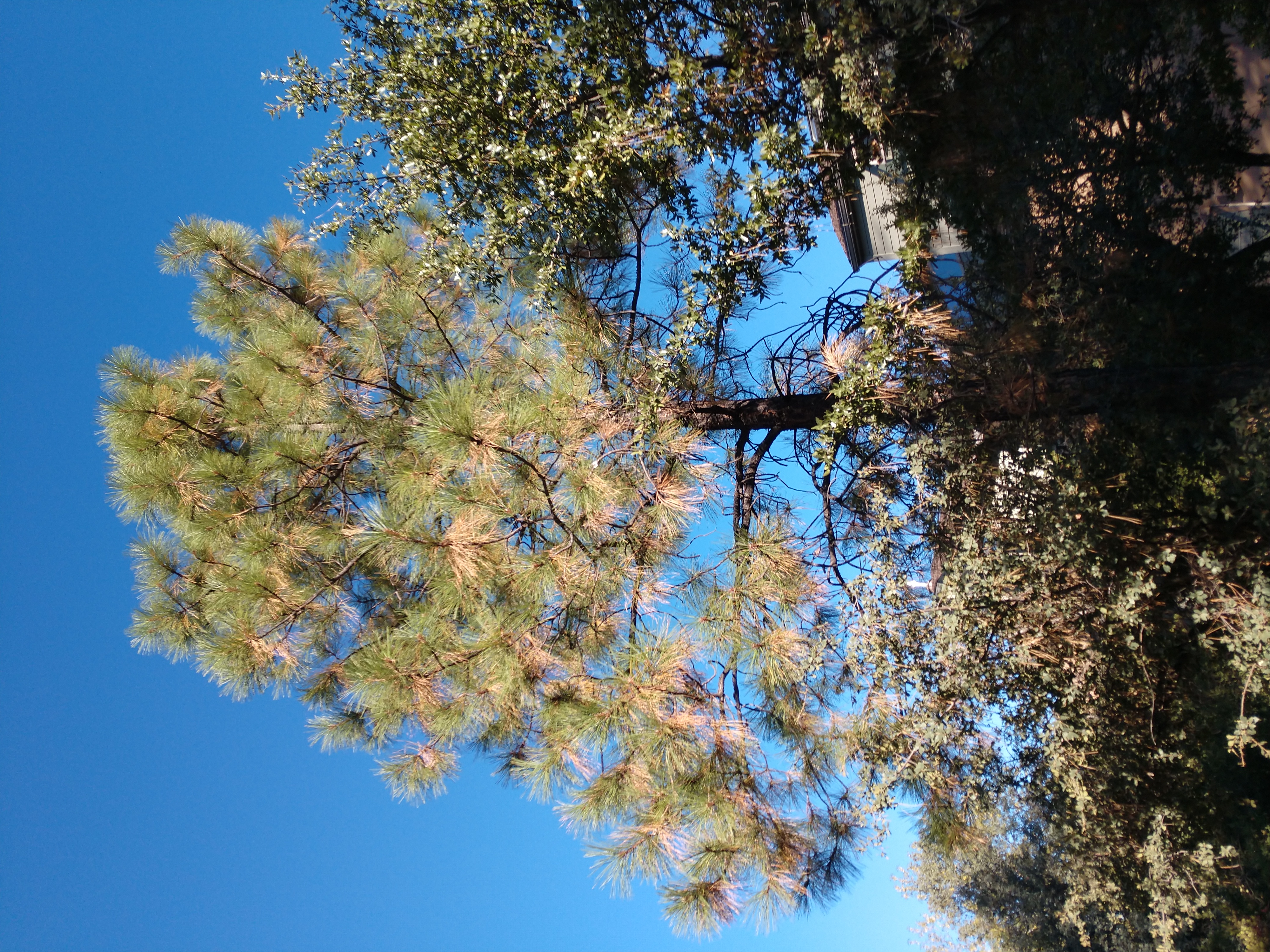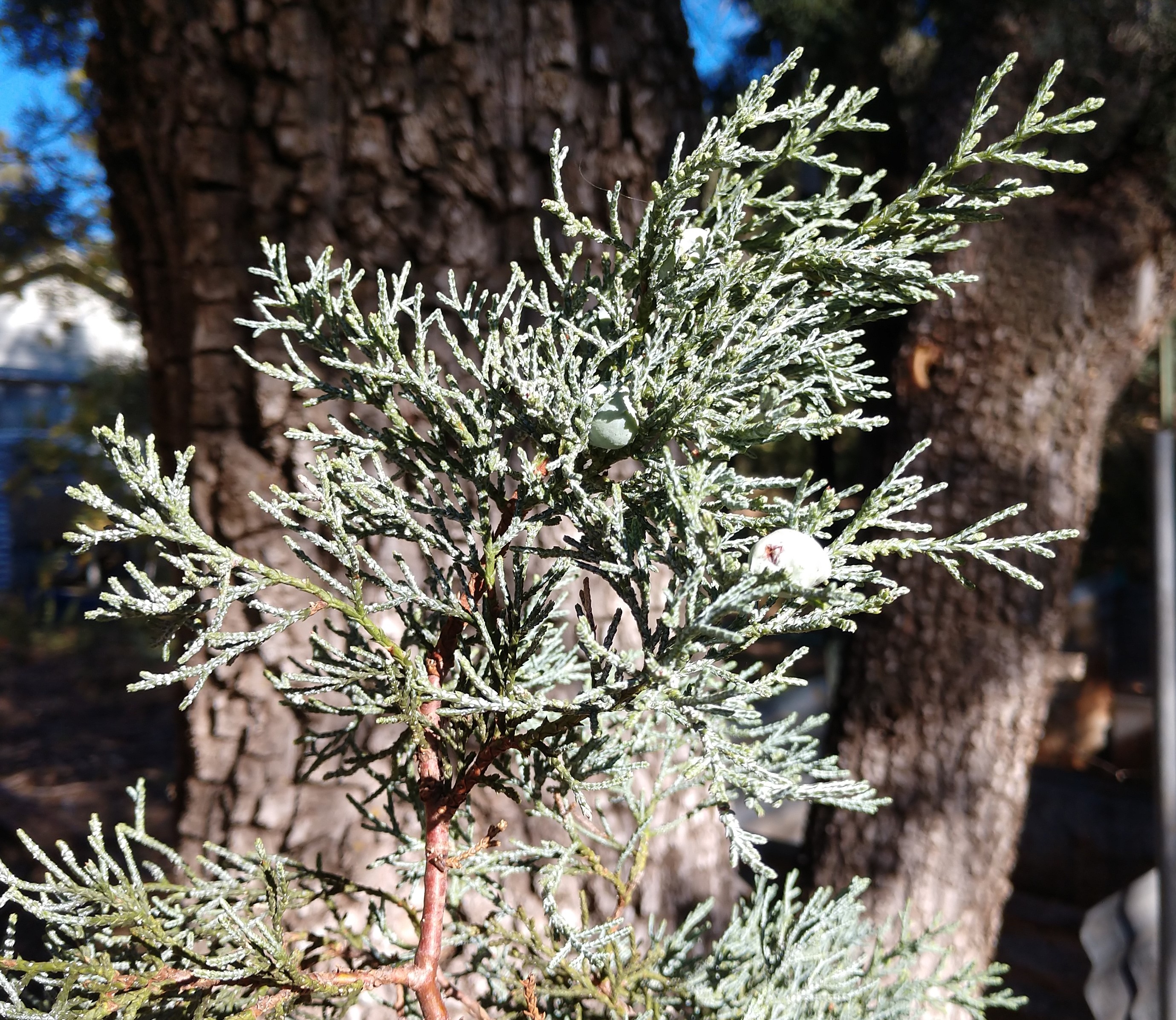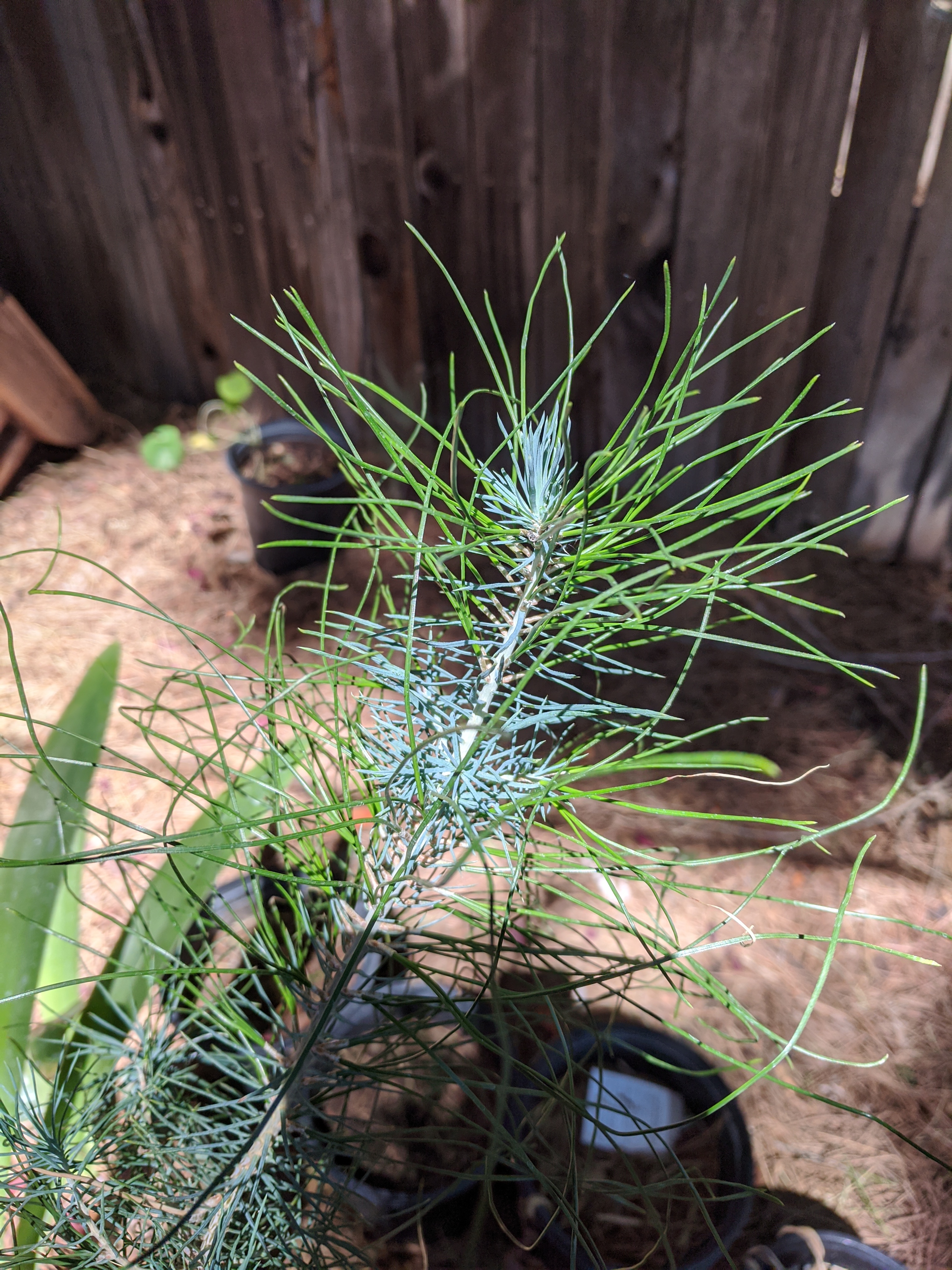 A Look at Conifer Leaves - October 7, 2020 Jeff Schalau, Agent, Agriculture & Natural Resources University of Arizona Cooperative Extension, Yavapai County Coniferous evergreens include pine, fir, spruce, yew, larch, cedar, juniper, cypress, arborvitae, and other less common species. They are classified as Gymnosperms: meaning “naked seed”. These plants diverged evolutionarily from ferns roughly 390 million years ago. Angiosperms (true flowering plants with seeds in fruits) then diverged from Gymnosperms between 100 and 125 million years ago and represent 80% of the plants now living. Many common landscape plants and native plants of our area are coniferous evergreens. Conifers use some different survival strategies and have unique growth habits compared to their modern cousins which are worth understanding. Most coniferous evergreens have persistent needles which have thick cuticles and contain resin. This is an expensive “investment” of their available resources and are usually meant to last for several growing seasons. This allows coniferous evergreens to photosynthesize during winter when deciduous trees are dormant and surviving off stored energy. It also means they benefit from some soil moisture during winter. Planted evergreens should receive some winter irrigation – especially during droughty times. The lifespan of a conifer leaf varies from species to species and can differ with environmental conditions such as precipitation, temperature, soil depth/water holding capacity, shading from upper branches, or neighboring trees, and other factors. You may have noticed that Ponderosa Pines have already started dropping their oldest needles this fall. Cooperative Extension Master Gardeners often receive inquiries about this phenomenon. It is normal. In northern Arizona, Ponderosa Pine needles usually last for 3-4 years. The needles that will drop start by turning yellow which quickly changes to a rusty color. Winds speed needle drop producing litter on the ground. This litter also benefits the trees by forming a mulch layer and eventually decompose to release nutrients to the soil. For wildfire defensible space considerations, some needles can be removed, but this also has consequences to soil cooling and nutrient cycling. Pinyon pine needles follow a similar pattern of needle drop with needles usually lasting 4-5 years. However, a widespread native pest, Pinyon Needle Scale (PNS), can shorten needle life significantly. When not managed, PNS kills all but the current year’s needles reducing the tree’s ability to photosynthesize and store energy. Evidence of this can be seen in the areas where PNS has run its’ course (Prescott, Sedona, and Payson). A few years ago, Yavapai County Cooperative Extension started receiving many calls regarding decline and mortality of Blue Spruce trees. In some cases, the cause was inadequate irrigation, but where Blue Spruce was planted in well-irrigated areas, it appeared that needle drop due was normal because only the oldest needles were dropping. I could not verify exactly how old these needles were, but after visiting with homeowners, it seemed that the needles dropping were between 10 and 12 years old. This was assumed to the maximum life of these needles. In other cases where trees were declining and/or dying, inadequate irrigation, poor soil, and excessive temperatures were thought to be the cause. We have not identified or seen evidence of a pathogen, but it should be noted that the southern range of Blue Spruce is found at elevations between 7,000 and 10,000 feet where it is likely cooler and receives more precipitation than Yavapai County. Junipers, cypress, and arborvitae usually have “scale-like” leaves when mature. These trees also shed older foliage like their needle-bearing cousins. It seems to happen in fall but given the scale-like leaves, it is more difficult to determine the age at which the leaves naturally die. If you’ve had an Arizona cypress in your yard, you may have noticed they seem to drop something year-round including bark, cones, needles, and twigs. All conifers start life with juvenile foliage that looks quite different than mature foliage. Juvenile foliage looks like a flimsier type of needle. You have probably seen it but not given it much consideration. Have you ever pruned a juniper with scale-like leaves and been poked by needles in the shaded interior of the plant? These sharp leaves are juvenile foliage that form in response to less than optimal environmental conditions. It happens sometimes on young pine trees growing in deep shade too. Some of the small Christmas trees in grown pots are purposely forced to produce juvenile foliage. I’ve included links and photos below. You can follow the Backyard Gardener on Twitter – use the link on the BYG website. If you have other gardening questions, email the Master Gardener Help Desk in Prescott (prescottmg@gmail.com) or Camp Verde (verdevalleymg@gmail.com) and be sure to include your name, location, and phone number. Find past Backyard Gardener columns or provide feedback at the Backyard Gardener web site: https://cals.arizona.edu/yavapai/anr/hort/byg/. Images  Ponderosa pine (Pinus ponderosa) tree dropping oldest, rusty colored needles in fall (photo by Jeff Schalau, University of Arizona).
Ponderosa pine (Pinus ponderosa) tree dropping oldest, rusty colored needles in fall (photo by Jeff Schalau, University of Arizona). Alligator juniper (Juniperus deppeana) foliage showing scale-like leaves found on many species of juniper, cedar, arborvitae and others (photo by Jeff Schalau, University of Arizona).
Alligator juniper (Juniperus deppeana) foliage showing scale-like leaves found on many species of juniper, cedar, arborvitae and others (photo by Jeff Schalau, University of Arizona). Elderica pine (Pinus elderica) seedling displaying juvenile foliage (gray) and mature needles (green), (photo submitted by a Yavapai County Cooperative Extension client, University of Arizona).
Elderica pine (Pinus elderica) seedling displaying juvenile foliage (gray) and mature needles (green), (photo submitted by a Yavapai County Cooperative Extension client, University of Arizona).Additional Resources Pines of Arizona, University of Arizona Extension extension.arizona.edu/sites/extension.arizona.edu/files/pubs/az1584.pdf Conifers Naturally Shed Needles in Summer and Fall, Oregon State University Extension Service extension.oregonstate.edu/news/conifers-naturally-shed-needles-summer-fallhttps://extension.oregonstate.edu/news/conifers-naturally-shed-needles-summer-fall Fall Needle Drop in Conifers, North Dakota State University Extension www.ag.ndsu.edu/mercercountyextension/news/news-columns-written-by-craig-askim/fall-needle-drop-in-conifers Aren’t They All Just Pines? How to ID Needle-Bearing Trees, Cornell University Extension smallfarms.cornell.edu/2019/02/arent-they-all-just-pines-how-to-id-conifer-trees/ |